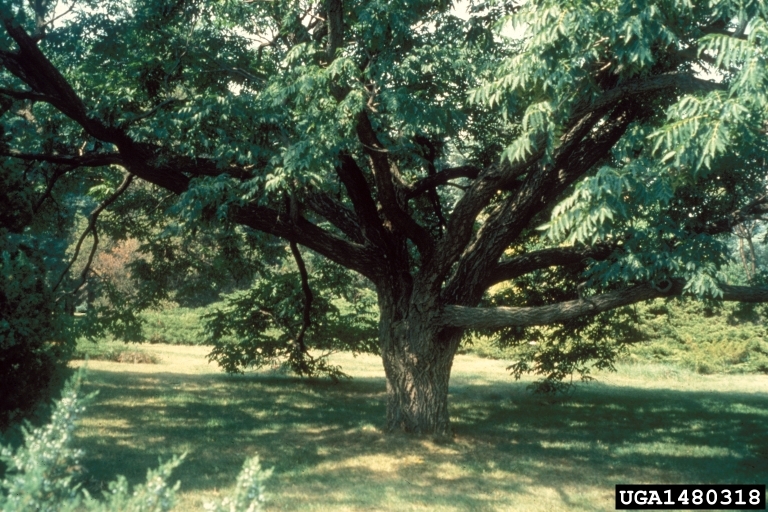|
Having trouble viewing this email? View it as a Web page.
November 7, 2023
November Weed of the Month: Amur Corktree
A single female tree can produce thousands of seeds, and the trees can outcompete native species
Emilie Justen Minnesota Department of Agriculture
In January, the Minnesota Department of Agriculture (MDA) added Amur corktree (Phellodendron amurense) to the Minnesota Noxious Weed List. Amur corktree is an introduced species that has been planted throughout the northeast and midwestern United States. It is tolerant of many urban conditions including drought and salt. Additionally, it grows quickly, has rot-resistant wood, and grows in many soil conditions. A single female tree can produce thousands of seeds, and the trees can outcompete native species and become invasive or weedy.
 Amur corktrees have short trunks with sprawling, low branches.
Click here to download the photo.
Amur corktree can resemble our native walnut trees. When you take a closer look, however, there are several key distinctions. On a mature Amur corktree, the outer bark is thick and spongy. If cut with a knife or pair of pruners, its inner bark will be bright yellow. It has upside-down horseshoe-shaped leaf scars (the mark left by a leaf after it falls off the twig) and compound leaves with long leaflets that smell like citrus or turpentine when crushed. Its branching structure is opposite.
 Horseshoe shaped leaf scars can distinguish Amur corktree from our native walnut species.
Click here to download the photo.
In the fall, the leaves turn a brilliant yellow-bronze, and occasionally this occurs after native trees have dropped their leaves. Fall may be a great time to scout for Amur corktree in areas you suspect it could be invading. Its dark blackish-brown berries, which resemble grapes, persist into winter, if the birds don’t feast on them before winter.
Amur corktree grows well in forests that people have disturbed with tree removal, construction, or other activities. Although it prefers to grow in sun, it can grow well in full shade. The shelf-like branches can shade out any competing species like native slow-growing oaks or hickories.
Amur corktree is a Specially Regulated species on the Noxious Weed List. Sellers must affix a label at point of sale which reads “Only sales of named male cultivars are permitted. Sales of all other Amur corktree are prohibited. All existing planted and escaped fruit producing trees must be controlled by tree removal or other means so that no seed is disseminated.”
Report Amur corktree in natural settings via EDDMapS.
For further information, please see:
MEDIA: For more information on Weed of the Month, contact Brittany Raveill, MDA Communications, at brittany.raveill@state.mn.us or 651-201-6131
|